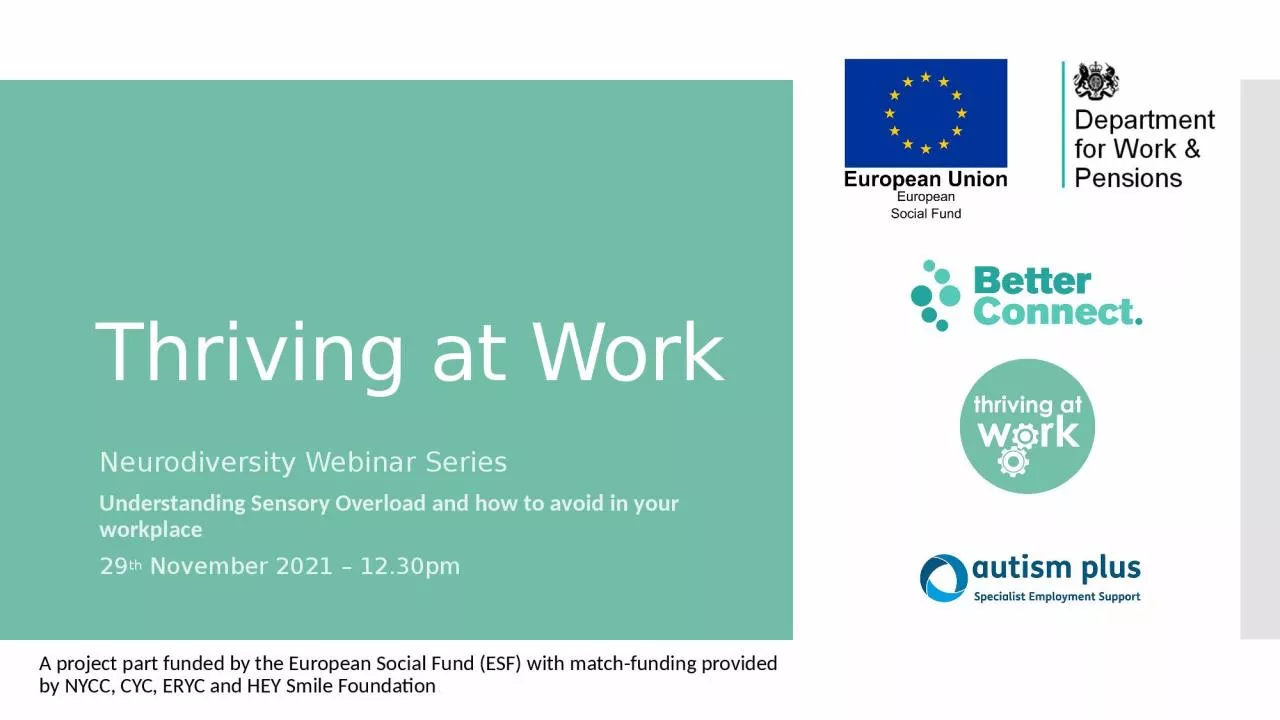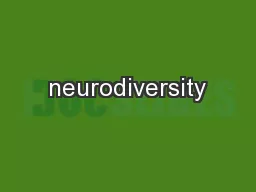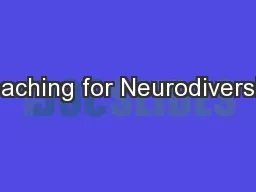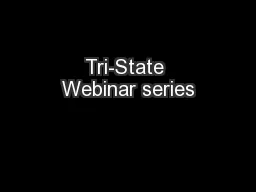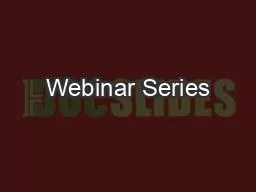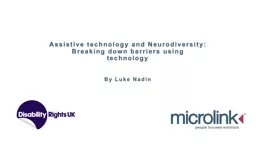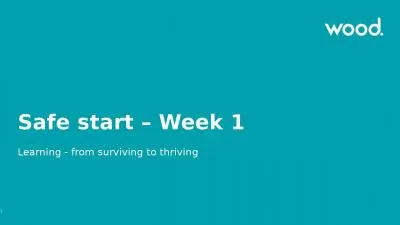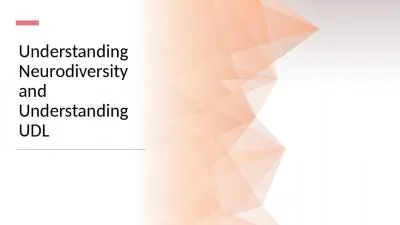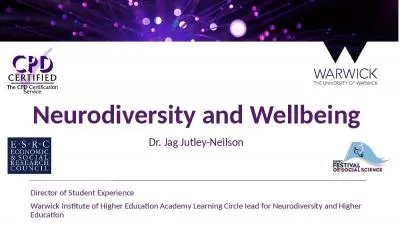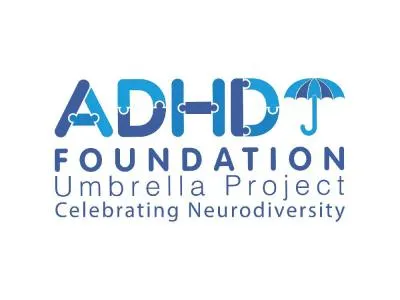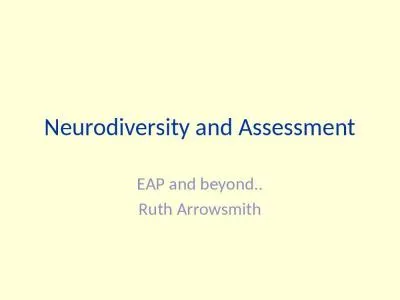PPT-Thriving at Work Neurodiversity Webinar Series
Author : madeline | Published Date : 2024-03-13
Understanding Sensory Overload and how to avoid in your workplace 29 th November 2021 1230pm A project part funded by the European Social Fund ESF with matchfunding
Presentation Embed Code
Download Presentation
Download Presentation The PPT/PDF document "Thriving at Work Neurodiversity Webinar ..." is the property of its rightful owner. Permission is granted to download and print the materials on this website for personal, non-commercial use only, and to display it on your personal computer provided you do not modify the materials and that you retain all copyright notices contained in the materials. By downloading content from our website, you accept the terms of this agreement.
Thriving at Work Neurodiversity Webinar Series: Transcript
Download Rules Of Document
"Thriving at Work Neurodiversity Webinar Series"The content belongs to its owner. You may download and print it for personal use, without modification, and keep all copyright notices. By downloading, you agree to these terms.
Related Documents

